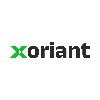
i
Bounteous x
Accolite
Filter interviews by
Bounteous x Accolite Associate Technical Delivery Manager Interview Questions and Answers
9 Interview questions
I primarily use Git for version control, utilizing branches, commits, and merges for collaboration and tracking changes.
Primary version control tool is Git
Utilize branches for different features or fixes
Regularly commit changes with descriptive messages
Merge branches to integrate changes
Use tools like GitHub or Bitbucket for collaboration
The Bash command to suppress all output and errors is 'command > /dev/null 2>&1'
Use '>' to redirect standard output to /dev/null
Use '2>&1' to redirect standard error to standard output
Combine both to suppress all output and errors: 'command > /dev/null 2>&1'
The process for writing a Bash script to read and parse a CSV file and print the last character of each line involves using a combination of commands and loops.
Use the 'while read' loop to read each line of the CSV file
Use 'awk' command to extract the last character of each line
Print the last character using 'echo' command
SQL query to perform a join on two tables and calculate aggregate sum using product ID.
Use JOIN keyword to combine two tables based on a related column (e.g. product ID)
Use GROUP BY clause to group the results by product ID
Use SUM() function to calculate the aggregate sum of a column (e.g. price)
CI/CD is a software development practice where code changes are automatically built, tested, and deployed frequently.
Continuous Integration (CI) involves automatically integrating code changes into a shared repository multiple times a day.
Continuous Deployment (CD) involves automatically deploying code changes to production after passing automated tests.
CI/CD helps in detecting and fixing integration errors early,...
Custom ordering in SQL allows you to specify the order in which results are returned.
Use ORDER BY clause in SQL to specify custom ordering
You can order by multiple columns and specify ASC (ascending) or DESC (descending) order
Example: SELECT * FROM table_name ORDER BY column_name ASC;
ETL pipeline procedures involve extracting data from various sources, transforming it, and loading it into a target database.
Extract data from source systems using tools like Informatica, Talend, or Apache Nifi
Transform data by cleaning, filtering, aggregating, and enriching it using SQL, Python, or Spark
Load the transformed data into a target database such as MySQL, PostgreSQL, or Redshift
Clustering depth in Snowflake refers to the number of levels in the clustering key hierarchy.
Clustering depth determines the granularity of data organization within Snowflake tables.
A higher clustering depth means more levels in the clustering key hierarchy, allowing for more specific data organization.
Clustering depth can impact query performance and storage efficiency in Snowflake.
Yes, it would be acceptable to work shift timings from 6:30 AM to 3:30 PM for a client based in New Zealand.
Working from 6:30 AM to 3:30 PM would align with the standard working hours in New Zealand due to the time zone difference.
This shift timing would allow for better communication and collaboration with the client in New Zealand.
It is important to ensure that the team is able to adjust to the early start time ...
Bounteous x Accolite Associate Technical Delivery Manager Interview Experiences
5 interviews found
I appeared for an interview in Dec 2024.
(3 Questions)
- Q1. What is the Look and Say sequence, and how can a program be written to generate the next number in this sequence?
- Ans.
Look and Say sequence is a sequence of numbers where each term is formed by describing the previous term.
Start with the number 1
Read off the digits of the previous number, counting the number of digits in groups of the same digit
For example, starting with 1, the sequence would be: 1, 11, 21, 1211, 111221, ...
- Q2. What is the SQL query to perform a join on two tables and calculate the aggregate sum using the product ID?
- Ans.
SQL query to perform a join on two tables and calculate aggregate sum using product ID.
Use JOIN keyword to combine two tables based on a related column (e.g. product ID)
Use GROUP BY clause to group the results by product ID
Use SUM() function to calculate the aggregate sum of a column (e.g. price)
- Q3. What is the process for writing a Bash script to read and parse a CSV file and print the last character of each line?
- Ans.
The process for writing a Bash script to read and parse a CSV file and print the last character of each line involves using a combination of commands and loops.
Use the 'while read' loop to read each line of the CSV file
Use 'awk' command to extract the last character of each line
Print the last character using 'echo' command
Platform: Coderbyte Test. The process is similar to the technical round, except that in the last bash script question, instead of printing the last character, print the third last character of each line.
(5 Questions)
- Q1. Can you tell me about yourself?
- Q2. What are the principles of Continuous Integration and Continuous Deployment (CI/CD)?
- Ans.
CI/CD is a software development practice where code changes are automatically built, tested, and deployed frequently.
Continuous Integration (CI) involves automatically integrating code changes into a shared repository multiple times a day.
Continuous Deployment (CD) involves automatically deploying code changes to production after passing automated tests.
CI/CD helps in detecting and fixing integration errors early, ensu...
- Q3. What version control tools do you use, and can you explain how you utilize them?
- Ans.
I primarily use Git for version control, utilizing branches, commits, and merges for collaboration and tracking changes.
Primary version control tool is Git
Utilize branches for different features or fixes
Regularly commit changes with descriptive messages
Merge branches to integrate changes
Use tools like GitHub or Bitbucket for collaboration
- Q4. What is the SQL query to join two tables and use aggregate functions such as SUM and AVG with GROUP BY?
- Ans.
SQL query to join two tables, use aggregate functions like SUM and AVG with GROUP BY
Use JOIN keyword to combine two tables based on a common column
Use GROUP BY clause to group the results based on a specific column
Use aggregate functions like SUM() and AVG() to calculate totals and averages within each group
- Q5. What is the Bash command to suppress all output and errors?
- Ans.
The Bash command to suppress all output and errors is 'command > /dev/null 2>&1'
Use '>' to redirect standard output to /dev/null
Use '2>&1' to redirect standard error to standard output
Combine both to suppress all output and errors: 'command > /dev/null 2>&1'
(3 Questions)
- Q1. Can you tell me about yourself and your family?
- Ans.
I am a dedicated professional with a passion for technology. My family is supportive and close-knit.
I have a background in technical project management
My family consists of my parents, my spouse, and two children
We enjoy spending time together outdoors and traveling
- Q2. Are you comfortable with the possibility of relocating for the position?
- Ans.
Yes, I am open to relocating for the position.
I am open to relocating for the right opportunity
I have relocated for previous positions and am comfortable with the process
I understand the benefits of relocating for career growth and development
- Q3. Would it be acceptable to work shift timings from 6:30 AM to 3:30 PM considering that the client is based in New Zealand?
- Ans.
Yes, it would be acceptable to work shift timings from 6:30 AM to 3:30 PM for a client based in New Zealand.
Working from 6:30 AM to 3:30 PM would align with the standard working hours in New Zealand due to the time zone difference.
This shift timing would allow for better communication and collaboration with the client in New Zealand.
It is important to ensure that the team is able to adjust to the early start time and m...
Interview Preparation Tips
I applied via LinkedIn and was interviewed in Oct 2023. There were 5 interview rounds.

(2 Questions)
- Q1. Snowflake architecture and SQL questions
- Q2. Custom ordering in sql
- Ans.
Custom ordering in SQL allows you to specify the order in which results are returned.
Use ORDER BY clause in SQL to specify custom ordering
You can order by multiple columns and specify ASC (ascending) or DESC (descending) order
Example: SELECT * FROM table_name ORDER BY column_name ASC;
(1 Question)
- Q1. Clustering depth in snowflake
- Ans.
Clustering depth in Snowflake refers to the number of levels in the clustering key hierarchy.
Clustering depth determines the granularity of data organization within Snowflake tables.
A higher clustering depth means more levels in the clustering key hierarchy, allowing for more specific data organization.
Clustering depth can impact query performance and storage efficiency in Snowflake.
(1 Question)
- Q1. Etl pipeline procedure examples
- Ans.
ETL pipeline procedures involve extracting data from various sources, transforming it, and loading it into a target database.
Extract data from source systems using tools like Informatica, Talend, or Apache Nifi
Transform data by cleaning, filtering, aggregating, and enriching it using SQL, Python, or Spark
Load the transformed data into a target database such as MySQL, PostgreSQL, or Redshift
(1 Question)
- Q1. Why are looking for a job change
- Ans.
I am seeking a job change to pursue new challenges, enhance my skills, and align my career with my long-term goals.
Career Growth: I am looking for opportunities that offer a clear path for advancement, such as leading larger projects or teams.
Skill Development: I want to work in an environment that encourages continuous learning, like attending workshops or obtaining certifications.
Cultural Fit: I am seeking a company ...
Interview Preparation Tips
Skills evaluated in this interview
I applied via Approached by Company and was interviewed before Jun 2022. There were 4 interview rounds.

(1 Question)
- Q1. Basic oops concept multi threading
(1 Question)
- Q1. Oops concept memory management collections
(1 Question)
- Q1. Hashmap Data structure sql concept
Interview Preparation Tips
I applied via Naukri.com and was interviewed in Aug 2021. There was 1 interview round.
(1 Question)
- Q1. The technical skills should be kept in mind
Interview Preparation Tips
I applied via Naukri.com and was interviewed before Jun 2021. There was 1 interview round.
(2 Questions)
- Q1. Questions on Collections, Multithreading
- Q2. Questions on system design
Interview Preparation Tips
Top trending discussions






Interview questions from similar companies

Interview Questionnaire
1 Question
- Q1. Exam was conducted on programmes. 10 questions were asked

Software Developer Interview Questions & Answers
Collabera Technologiesposted on 3 Feb 2021
Interview Questionnaire
1 Question
- Q1. Interview questions on .net technology

I appeared for an interview before Sep 2020.
(2 Questions)
Round duration - 90 minutes
Round difficulty - Medium
We were supposed to give test in any time between 3 PM to 9 PM.
- Q1.
Total Unique Paths Problem Statement
You are located at point ‘A’, the top-left corner of an M x N matrix, and your target is point ‘B’, the bottom-right corner of the same matrix. Your task is to calcula...
- Ans.
The problem involves finding the total number of unique paths from the top-left to bottom-right cell of a matrix by moving only right or down.
Use dynamic programming to solve the problem efficiently.
Create a 2D array to store the number of unique paths at each cell.
Initialize the first row and first column with 1 as there is only one way to reach them.
For each cell (i, j), the number of unique paths is the sum of paths...
- Q2.
Subtree Node Count Problem
We are provided with a tree containing 'N' nodes, numbered from 0 to N-1. The objective is to determine the total number of nodes within each subtree of the provided tree. Speci...
- Ans.
Given a tree with N nodes, find the number of elements in each subtree rooted at every node.
Traverse the tree using Depth First Search (DFS) to calculate subtree sizes for each node.
Use an array to store subtree sizes for each node, starting with leaf nodes having size 1.
The subtree size of a node is the sum of subtree sizes of its children plus 1 for the node itself.
(1 Question)
Round duration - 120 minutes
Round difficulty - Medium
Pair Programming Interview( this round is similar to machine coding round) it started around 11 AM
Focus Areas: Problem solving and implementation of extensions.
The pair coding round is focused on OOPS concepts. You are paired with a TWer for this round. They let you code first for an hour and in the next hour they review your code and suggest changes which would improve the code structure, readability and make it modular and reusable and functional.
- Q1.
River Crossing: Help Ninja Cross Over
Ninja stands at the start of a wooden bridge over a river. Some segments of the bridge are damaged. The undamaged segments, marked as 'safe', are listed in an array
S... - Ans.
Check if Ninja can cross the river by jumping from one safe segment to another based on given constraints.
Iterate through the 'SAFE' array and check if Ninja can make the required jumps to reach the last safe segment.
Ensure that the next jump is either 'X' - 1, 'X', or 'X' + 1 units from the previous jump.
Return 'true' if Ninja can successfully cross the river, otherwise return 'false'.
(1 Question)
Round duration - 120 minutes
Round difficulty - Medium
Students who were shortlisted from Pair Programming round was selected for this round around 3 PM. In this round there were two interviewer.
- Q1.
Middle of a Linked List
You are given the head node of a singly linked list. Your task is to return a pointer pointing to the middle of the linked list.
If there is an odd number of elements, return the ...
- Ans.
Return the middle element of a singly linked list, or the one farther from the head if there are even elements.
Traverse the linked list with two pointers, one moving twice as fast as the other
When the fast pointer reaches the end, the slow pointer will be at the middle
Return the element pointed to by the slow pointer
Interview Preparation Tips
Tip 1 : Have good grasp on OOPS since they have a round named Pair Programming round which is focused upon this.
Tip 2 : Write clean, modular and functional code.
Tip 3 : Practice Data Structures and Algorithms
Tip 4 : You should know breadth and depth of whatever is mentioned in your resume.
Tip 5 : Be loud and clear.
Tip 1 : Make single page resume.
Tip 2 : Mention relevant things on resume.
Tip 3 : Do not put any false things on resume. Projects, internships you are mentioning be ready to answer questions related to it regarding what you solved, idea, databases, design.
Tip 4 : Contribute in open source, participate in hackathons.
Skills evaluated in this interview

I applied via Approached by Company and was interviewed before Mar 2021. There were 4 interview rounds.
DSA
About Social changes
(2 Questions)
- Q1. Tell me about yourself.
- Q2. Very basic questions
Interview Preparation Tips
- DSA

Software Developer Interview Questions & Answers
Collabera Technologiesposted on 28 Nov 2021
I applied via Naukri.com and was interviewed in Oct 2021. There was 1 interview round.
Interview Questionnaire
1 Question
- Q1. Question are based on Project and the skills which I mention in my CV.
Interview Preparation Tips
Bounteous x Accolite Interview FAQs
Some of the top questions asked at the Bounteous x Accolite Associate Technical Delivery Manager interview -
Tell us how to improve this page.
Bounteous x Accolite Interviews By Designations
- Bounteous x Accolite Software Engineer Interview Questions
- Bounteous x Accolite Senior Software Engineer Interview Questions
- Bounteous x Accolite Software Developer Interview Questions
- Bounteous x Accolite Java Developer Interview Questions
- Bounteous x Accolite Softwaretest Engineer Interview Questions
- Bounteous x Accolite Associate Technical Delivery Manager Interview Questions
- Bounteous x Accolite Software Developer Intern Interview Questions
- Bounteous x Accolite Test Engineer Interview Questions
- Show more
Interview Questions for Popular Designations
- Software Developer Interview Questions
- Java Developer Interview Questions
- Associate Software Engineer Interview Questions
- Associate Interview Questions
- Technical Lead Interview Questions
- Associate Consultant Interview Questions
- Senior Software Developer Interview Questions
- Application Developer Interview Questions
- Show more
Overall Interview Experience Rating
based on 3 interview experiences
Difficulty level
Duration
Interview Questions from Similar Companies

Bounteous x Accolite Associate Technical Delivery Manager Reviews and Ratings
based on 73 reviews
Rating in categories
|
Senior Software Engineer
1.7k
salaries
| ₹5.5 L/yr - ₹25.9 L/yr |
|
Software Engineer
599
salaries
| ₹6 L/yr - ₹14.1 L/yr |
|
Associate Technical Delivery Manager
438
salaries
| ₹20.2 L/yr - ₹36 L/yr |
|
Senior Test Engineer
230
salaries
| ₹8.2 L/yr - ₹17.7 L/yr |
|
Technical Delivery Manager
126
salaries
| ₹28 L/yr - ₹45 L/yr |

Xoriant

CitiusTech

HTC Global Services

HERE Technologies
- Home >
- Interviews >
- Bounteous x Accolite Interview Questions












